Good things to know about our events.
Length: Our events are usually a two day affair, almost always on a weekend. You can participate on one or both days, it’s your choice.
Location: We stage from either private property, such as a campground, or on public land. Since direct trail access is not an issue for our Dual Sport rides, we frequently stage from a private campground or township park. Directions to the staging area are on the event flyer. We will arrow the “main route” into the location on some events. We encourage you to email or call if you have any concerns about how to get there.
Accomodations: Camping is always an option at our staging areas. Some events have free field camping, some have pay-for camp sites, some have cabins you can rent. There are normally motels within a short drive from the event locations. The specifics are always included on the information page for an event. Most participants will camp at the staging area, starting on Friday night and staying through until Sunday afternoon.
Crowds: Each event varies on the number of participants. The Club Rides are under 20 riders; the regular events are in the 50 rider range while we work to keep our “key” events, such as the AMA National Dual Sports, under 150 riders. There is no timing or other specific time you have to leave camp, so there are no crowds on the routes, no big “bunches” of folks hogging up the trail.
Food: Some of our events have food provided on trail and at camp. Some run you past eatin’ places so you can make your own choice. Event flyers will indicate if food is provided.
Fuel: All of our routes have gas stops (commercial gas stations). Distance varies on each loop but the average is 70 miles. It’s safest to bring some gas in a can to camp with you, that way the bike can start the day on a full tank.
Tech Inspection: Also known as Sound Check. Normally done first thing in the morning. Look for the signs indicating where it starts or follow the bikes to the line. Sometimes done the night before the event. You should go through sound check prior to heading to the sign up table. Registration forms are given out to those that pass the technical inspection. Please wear your helmet when riding to the sound check. Event flyer will have the specific times.
Sign Up: After passing tech inspection head on over to the sign up booth/table/tent. There you can pay your registration fees, get ORV stickers (if needed) and related. Information about the ride is available here. Route sheets, maps and GPS data is provided here. Sign up starts in the AM, usually 8AM. See the event flyer for specifics.
Required membership: You can sign up for whatever membership that’s required at the sign up table. If membership is required, it will be listed in the event flyer. Don’t hesitate to call/email if you have questions.
Recommended equipment: A route sheet holder is highly recommended. Our rides are based on route sheets. We sell as well as rent these at sign up if you don’t bring one. GPS is great, we can load most Garmin units at sign up. Knobby tires are pretty much required for all but our “adventure bike” rides and even then we still recommend knobs over street oriented rubber.
Routes: Routes use public roads, public land, forest trails and even private land. Permits are obtained for use where required. These roads are open to the public during the events, there is no “one-way” for any of the course, so expect oncoming traffic. Please note that some of our events use “event trail” that may only be open during our event.
Pit riding: Nope, none of that. Don’t do it. Wear a helmet whenever you are riding.
All night partying: Quiet time is 11PM. Party as much as you want, just don’t disturb your neighbors. If we can hear you after 11PM, you will be asked to leave. Especially generators!!! Shut ’em down at night.
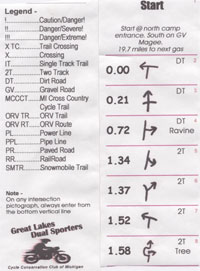
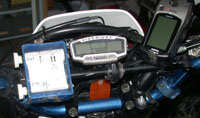
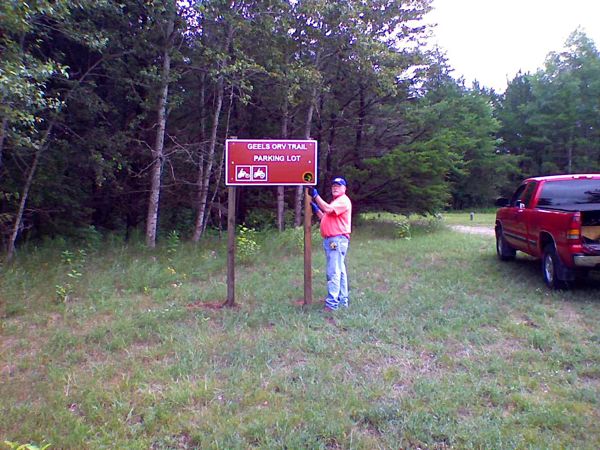
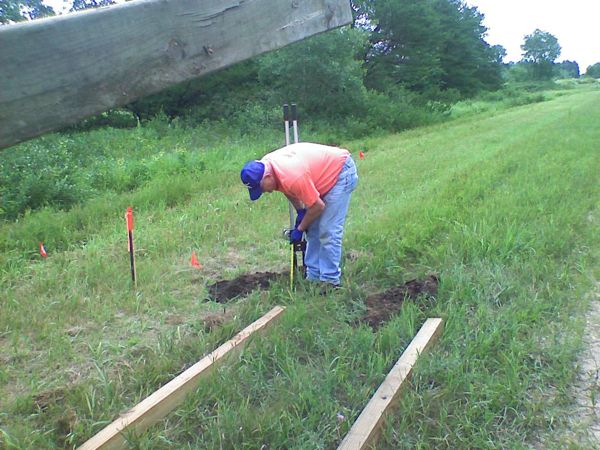
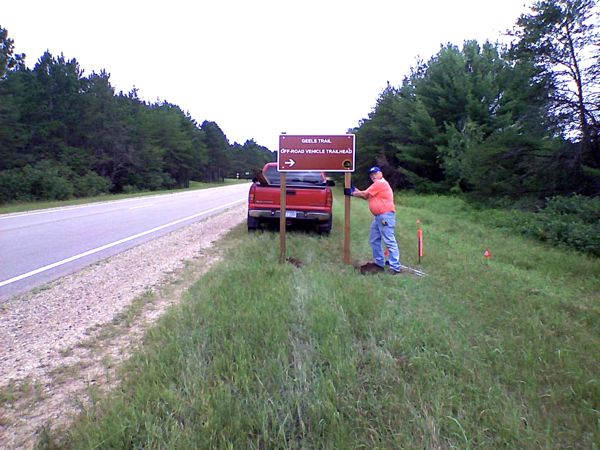
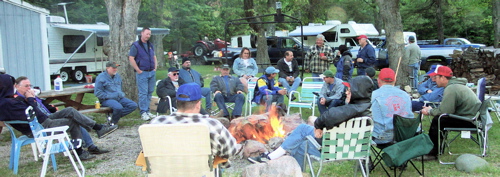
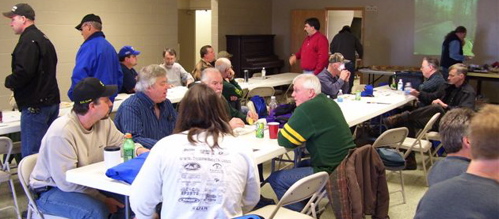
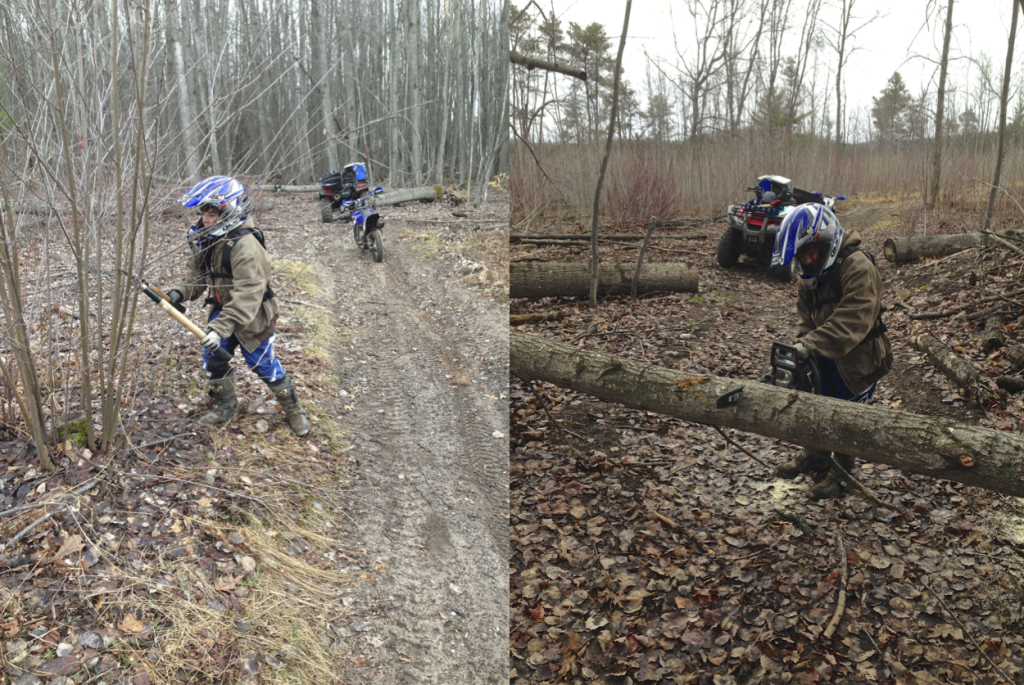 as you must remove any branches/limbs in a 50″ wide by 8 foot high rectangle on the trail. Signing the trail covers the installation of ORV trail signs (brown carsonite fiberglass masts), stop signs and posts and the other signs you see on the trail. We think most people are not aware that it is volunteers that put the signs up, wrongly assuming the DNR “does it all”. Here’s one of our Member’s
as you must remove any branches/limbs in a 50″ wide by 8 foot high rectangle on the trail. Signing the trail covers the installation of ORV trail signs (brown carsonite fiberglass masts), stop signs and posts and the other signs you see on the trail. We think most people are not aware that it is volunteers that put the signs up, wrongly assuming the DNR “does it all”. Here’s one of our Member’s 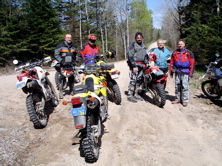
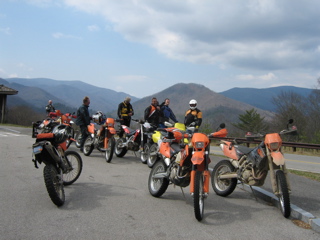
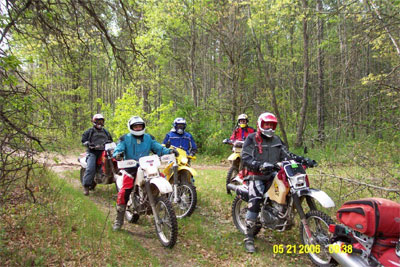 The use of public roads requires the bikes to be street legal (and so should the rider). Did we mention bikes? Dual Sport is about motorcycles. Not that you can’t have fun on your Quad/Jeep/Rhino/Mongoose but DS riding is designed for and best ridden on motorcycles.
The use of public roads requires the bikes to be street legal (and so should the rider). Did we mention bikes? Dual Sport is about motorcycles. Not that you can’t have fun on your Quad/Jeep/Rhino/Mongoose but DS riding is designed for and best ridden on motorcycles.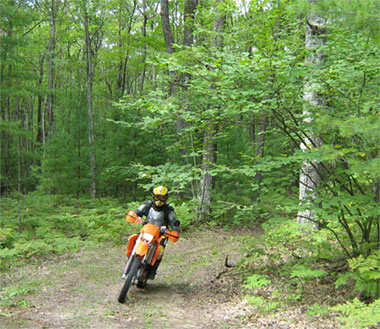
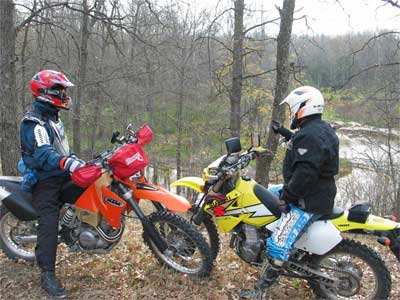 Many consider DS to have morphed from the primarily trail side to the primarily rustic road type of ride. The two track forest roads provide a trail-like, rougher and scenic experience without the concentration and physical exertion required for pure trail riding. At the same time it’s more challenging and more interesting than pure road riding. This type also allows for the widest variety of bikes to enjoy the ride, from the more dirt bike side to the more road bike side.
Many consider DS to have morphed from the primarily trail side to the primarily rustic road type of ride. The two track forest roads provide a trail-like, rougher and scenic experience without the concentration and physical exertion required for pure trail riding. At the same time it’s more challenging and more interesting than pure road riding. This type also allows for the widest variety of bikes to enjoy the ride, from the more dirt bike side to the more road bike side. The route sheet tells the rider which turns to make – kind of like having a back seat driver without the yelling. Technology has been integrated into this stuff now with GPS units being used with varying degrees of success.
The route sheet tells the rider which turns to make – kind of like having a back seat driver without the yelling. Technology has been integrated into this stuff now with GPS units being used with varying degrees of success.